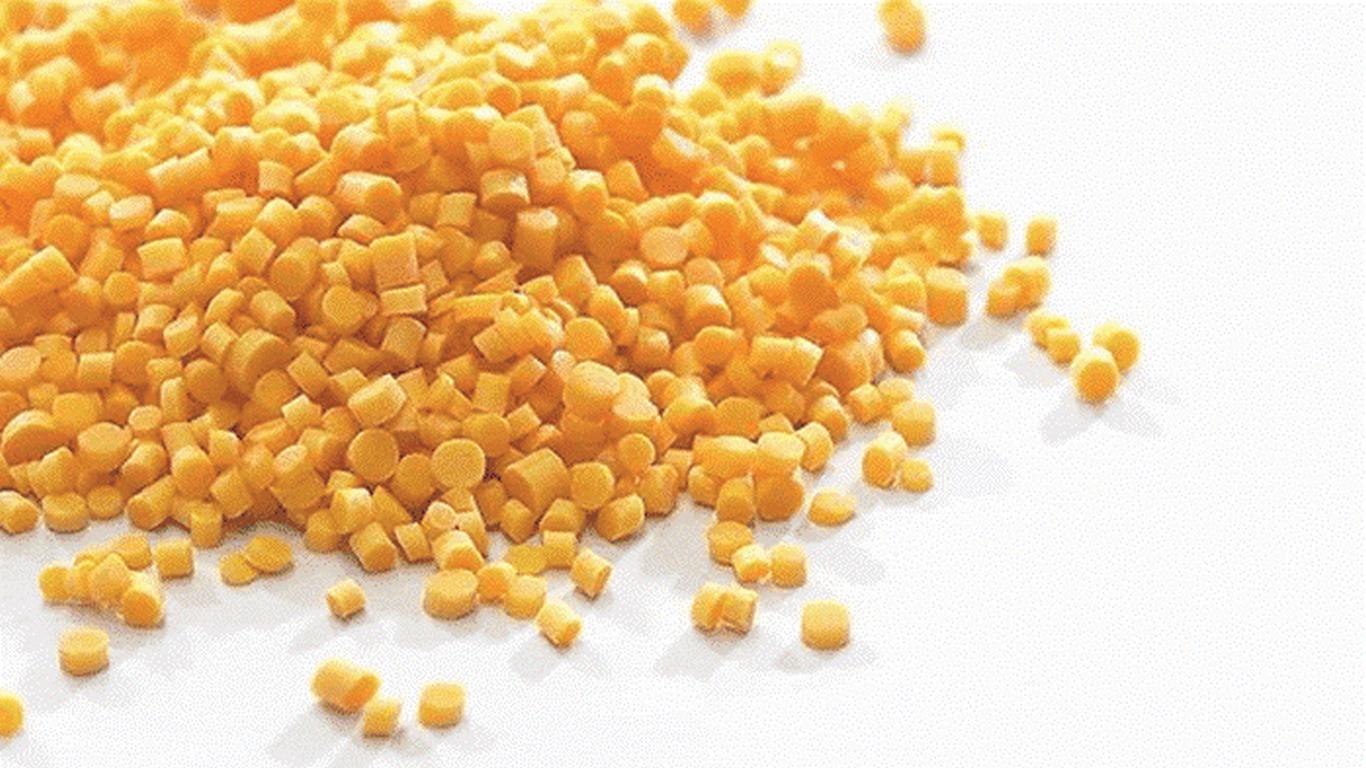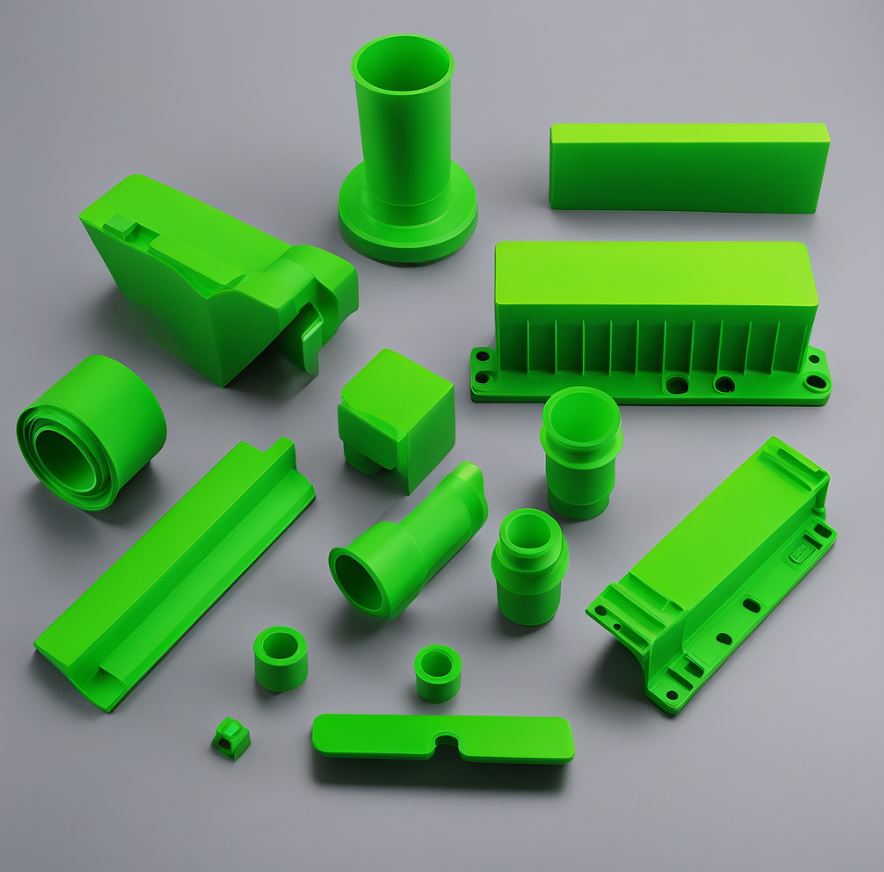PPS Injection Molding
PPS, also known as polyphenylene sulfide, is high temperature palstic materials that used in many industry, according to its proteries, PPS are specially used to mold components which are used in the high heat temperature environment, there are many other similar plastic materials like PPS which are high temperature materials, go to high teamperature plastic matreial page to know more similar plastic materials.
In this blog post, we will explore what PPS injection molding is, the advantages and disadvantages of PPS plastic injection molded parts, the process itself, the materials that are compatible with PPS injection molding, tips for successful PPS injection molding, and the challenges and potential issues that may arise during the process.

What is PPS Injection Molding
PPS (polyphenylene sulfide) is a thermoplastic polymer that is known for its high heat resistance, chemical resistance, and dimensional stability. It is a semi-crystalline material with excellent mechanical properties and is often reinforced with fiber glass to increase its strength and stiffness.
PPS material is commonly used in applications such as automotive parts, electrical components, and industrial products due to its high performance characteristics. It can withstand high temperature and harsh chemicals such as acids, bases, and organic solvents. It also has good electrical insulation properties and is UV resistant.
PPS is a more expensive plastic material compared to other plastics, which can make the process more costly. Additionally. You can go to what is PPS plastic material page to know more about PPS.
A Brief History about PPS plastic material:
PPS (polyphenylene sulfide) has an intriguing history. Its actuality was first brought to light by Friedel and Crafts in 1888. At the end of the 1940s, it was decided that PPS could come an engineering polymer with marketable significance. latterly, Phillips Petroleum (USA) developed a marketable process for polymerizing PPS and were the first to succeed at establishing a manufacturing operation in 1973. This early interpretation of PPS had a fairly low molecular weight and operations were developed for its use in specialty coatings. Meanwhile, by adding the molecular weight by a thermal cross-linking response in the presence of oxygen, both processing and mechanical parcels were bettered. It was also discovered that PPS would be suitable for injection molding and exhibition excellent heat and chemical resistance.
In the manufacturing, choosing the right materials is super important. It can really affect how well products perform and how long they last. Polyphenylene sulfide (PPS) is a tough thermoplastic that’s become a favorite for challenging uses because of its amazing properties. We’ll see how this technique creates top-notch PPS plastic parts that meet the strict needs of different industries.
Types of PPS Plastic: PPS resin comes in several forms, each made for specific uses:
- Linear PPS: This has about double the molecular weight of regular PPS, which boosts its toughness & impact strength.
- Cured PPS: Regular PPS gets heated with air. This curing process stretches molecular chains and adds some branches, making it stronger and more thermoset-like.
- Poly sulfone, Polyphenylene Sulfide (PSE): This type has a higher molecular weight than regular PPS, allowing more polymer chains to branch out. This improves traits like toughness & ductility.
Understanding PPS Molded Parts: A Material Overview:
PPS injection molding part is a strong polymer known for its fantastic thermal stability and chemical resistance. It doesn’t wear out easily under harsh conditions like high heat and tough chemicals. Here are few key features of PPS plastic material:
- Great thermal deformation temperature: It can withstand high temperatures for long without losing shape or function.
- Awesome chemical resistance: Our pipes resist most acids, alkalis, and solvents used in harsh environments (like Locale pipes).
- Mechanical strength: It has high tensile strength, flexural modulus, and impact resistance—ensuring parts stay intact during use!
- Dimensional stability: PPS keeps its shape well in various conditions—perfect for tasks needing tight tolerances.
- Electrical properties: Its high electrical insulation makes it suitable for motor-driven & electrical parts.
- Flame retardancy: Naturally flame-retardant, it meets strict safety standards for industries like aerospace & automotive.
- Low water absorption: With just 0.02% absorption, this works great for areas needing minimal moisture uptake.
The Art of PPS Injection Molding:
Injection molding is a flexible way to make parts by injecting melted plastic into a mold to create complex shapes. When you mix this with the amazing qualities of PPS material, you get top-performing PPS injection molding components that are built to last.
Key Considerations for PPS Injection Molding:
When molding with PPS plastics, we need to pay attention to:
- Mold Design: Designing molds well helps with flow dynamics and part quality—things like channel location and cooling channels matter a lot, PPS is high heat and super tear plastic material, mold design and cavity steel selection will be very important to keep the long life time of mold.
- Material Selection: The right grade of PPS is picked based on what’s needed—look at heat resistance & mechanical properties to choose wisely.
- Processing Parameters: Keeping an eye on factors like temperature & injection pressure is crucial for consistent quality and better production efficiency.
- Molding Machines: High-performance machines designed for PPS are needed to avoid issues while processing.

PPSU injection molding
Applications of Precision PPS Injection Molding:
You’ll find precision PPS injection molding in many industries that require high performance:
Here are some common examples:
- Automotive: It’s used in parts like engine covers & connectors because of its heat and chemical resistance.
- Electronics: Useful in components like circuit boards & enclosures where electrical insulation matters.
- Aerospace: Lightweight engine parts & structural components rely on its high-temperature resistance.
- Chemical Processing: Thanks to its great chemical durability, it’s found in valves & pumps.
- Medical Devices: Used in surgical tools & implants where sterility and biocompatibility are key.
- Consumer Goods: Think electrical appliances and sports gear.
- Industrial Equipment: Such as pumps, valves, gears, and bearings.
Benefits of Precision PPS Injection Molding:
There are plenty of perks when using precision PPS injection molding—it’s a smart choice for making high-quality plastic parts! Let’s look at these benefits:
- Enhanced Performance: PS parts shine in tough settings because they’re super strong!
- Durability & Longevity: These components resist wear very well—they can last a really long time!
- Precision & Accuracy: Thanks to this method, parts come with excellent tolerances meeting strict quality checks!
- Versatility: You can shape PPS into all kinds of complex designs easily!
- Cost-effectiveness: It’s often cheaper than using other materials or methods while still providing great performance!
Molding Considerations:
Keep these things in mind while molding:
- Mold temperature affects strength and crystallinity.
- Injection speed changes product quality and cycle time.
- Good mold venting prevents issues like air pockets.
- Be aware of part design features like draft angles!
Advantages & Disadvantages of PPS injection mold:
Here are some advantages:
- High heat resistance
- Good chemical resistance
- Strong mechanical properties
- Great dimensional stability
- Great electrical properties
- Flame-retardant
- Hydrolytic stability
- Produces low smoke
- Safe for food contact
Now the downsides:
- More expensive than some other plastics
- Can be tricky to process
- Fewer color choices
By keeping these points in mind, manufacturers can make clever choices about using PPS injection molding to get products that perform excellently & last long!
Conclusion:
In summary, precision PPS injection molding helps make high-performance plastic parts suited for tough industry demands! It uses the unique strengths of PPS along with precise techniques—building components that excel in thermal stability, chemical resistance, durability, and strength.
As businesses try to meet new market needs quickly, precision PPS injection molding will be essential in delivering top-quality products! By leveraging what makes PPS amazing along with skilled injection shaping techniques, companies can boost product performance while gaining advantages in today’s fast-moving market.
5 FAQs About PPS Injection Molding:
1. Can PPS injection molding parts be painted?
Yes, PPS molded parts can be painted or carpeted. still, proper face medication is pivotal to insure adhesion and continuity.
Then are some common styles for oil or coating PPS injection molding parts:
Chemical Etching: This process creates a rough face on the PPS, furnishing better mechanical cling for coatings.
Honey treatment: Applying a honey to the PPS face can produce a micro-porous subcaste that improves adhesion.
Corona Discharge: This system uses electrical discharge to modify the face parcels of PPS, enhancing coating adhesion.
Tube Treatment: analogous to nimbus discharge, tube treatment can ameliorate face energy and promote coating adhesion.
2.What should be looked at when designing mold for PPS plastic injection molding material?
Key points include:
- Gate placement impacts quality a lot.
- Efficient cooling channels help shape products right.
- Good venting stops defects from appearing.
- Mold materials must fit application needs.
3.What challenges might come with PSE injection molding?
Some challenges may be: – Harder material processing due to higher temps, might need special machines. Costs could be higher upfront but it’s often worth it later.
4.How does PSE injection molding help with sustainability?
It helps by:
– Reducing waste since these parts last longer—they need replacing less often!
– Improving energy efficiency by handling high temps without tons of heating/cooling needed!
– Supporting recycling efforts which reduce the need for new resources!

5.How can PPS be used in additive manufacturing?
PPS in Additive Manufacturing: PPS is a promising material for cumulative manufacturing (AM) due to its excellent heat resistance, chemical resistance, and mechanical parcels. While it presents some challenges due to its high melting point and thermal conductivity, several AM ways can be used to reuse PPS Ray Greasepaint Bed Fusion (LPBF) One of the most common styles for recycling PPS is LPBF. In this process, a ray melts and fuses powdered PPS subcaste by subcaste to produce the asked part. LPBF allows for complex shapes and high- quality corridor.
Fused Filament Fabrication (FFF): FFF, also known as 3D printing, can be used to reuse PPS fibers. still, due to PPS’s high melting point, specialized snoots and heated chambers are needed. FFF is suitable for prototyping and small- scale product of PPS corridor.
Material Extrusion Additive Manufacturing (MEAM): MEAM is analogous to FFF but uses larger- periphery fibers or bullets. This fashion can be used to produce larger PPS corridor with better dimensional delicacy.
Stereolithography (SLA): SLA involves projecting a ray into a liquid resin bath, curing the PPS material subcaste by subcaste. While PPS is not a common material for SLA due to its high melting point, some technical resins and post-processing ways can be used.
Challenges and Considerations:
Post-Processing: AM- produced PPS corridor may bear post-processing way similar as annealing or machining to achieve asked parcels and forbearance. Despite these challenges, PPS offers significant eventuality for cumulative manufacturing. Its high- performance parcels make it suitable for operations in aerospace, automotive, and other diligence taking durable and heat- resistant factors.
We have been working with many type of PPS injection molded parts PPSU injection molding, PEEK injection molding and other type of plastics material, if you have any project that needs PPS injection molded products, welcome to contact us, we will quote you the best price.




